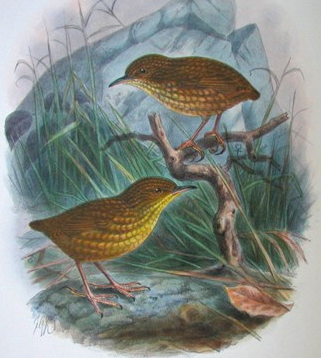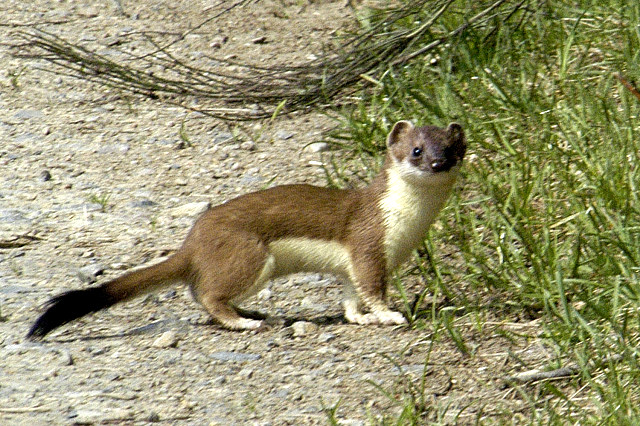|
Southern Red-breasted Plover
The southern red-breasted plover or southern New Zealand dotterel (''Charadrius obscurus obscurus'') is a bird endemic to New Zealand, and was once widespread across the South Island, though now it breeds nearly exclusively on Stewart Island. Taxonomy Traditionally, the southern New Zealand dotterel and its cousin, the northern New Zealand dotterel, were lumped together into one species under the name New Zealand dotterel. However, studies have shown that there are significant morphological differences to justify the separation of these two subspecies, with the southern subspecies being far bulkier. Not only that, but different environments on the South Island may have given rise to different features, such as stronger winds necessitating a longer middle toe and claw. There are also significant differences in behavior, with the northern New Zealand dotterel preferring sandy beaches, while the southern New Zealand dotterel prefers inland nest sites, wintering on the South Island's b ... [...More Info...] [...Related Items...] OR: [Wikipedia] [Google] [Baidu] |
Johann Friedrich Gmelin
, fields = , workplaces = University of GöttingenUniversity of Tübingen , alma_mater = University of Tübingen , doctoral_advisor = Philipp Friedrich GmelinFerdinand Christoph Oetinger , academic_advisors = , doctoral_students = Georg Friedrich HildebrandtFriedrich StromeyerCarl Friedrich KielmeyerWilhelm August LampadiusVasily Severgin , notable_students = , known_for = Textbooks on chemistry, pharmaceutical science, mineralogy, and botany , author_abbrev_bot = J.F.Gmel. , author_abbrev_zoo = Gmelin , influences = Carl Linnaeus , influenced = , relatives = Leopold Gmelin (son) , awards = Johann Friedrich Gmelin (8 August 1748 – 1 November 1804) was a German naturalist, botanist, entomologist, herpetologist, and malacologist. Education Johann Friedrich Gmelin was born as the eldest son of Philipp Friedrich Gmelin in 1748 in Tübingen. He studied medicine under his father at University of Tübingen ... [...More Info...] [...Related Items...] OR: [Wikipedia] [Google] [Baidu] |
New Zealand
New Zealand ( mi, Aotearoa ) is an island country in the southwestern Pacific Ocean. It consists of two main landmasses—the North Island () and the South Island ()—and over 700 smaller islands. It is the sixth-largest island country by area, covering . New Zealand is about east of Australia across the Tasman Sea and south of the islands of New Caledonia, Fiji, and Tonga. The country's varied topography and sharp mountain peaks, including the Southern Alps, owe much to tectonic uplift and volcanic eruptions. New Zealand's capital city is Wellington, and its most populous city is Auckland. The islands of New Zealand were the last large habitable land to be settled by humans. Between about 1280 and 1350, Polynesians began to settle in the islands and then developed a distinctive Māori culture. In 1642, the Dutch explorer Abel Tasman became the first European to sight and record New Zealand. In 1840, representatives of the United Kingdom and Māori chiefs ... [...More Info...] [...Related Items...] OR: [Wikipedia] [Google] [Baidu] |
South Island
The South Island, also officially named , is the larger of the two major islands of New Zealand in surface area, the other being the smaller but more populous North Island. It is bordered to the north by Cook Strait, to the west by the Tasman Sea, and to the south and east by the Pacific Ocean. The South Island covers , making it the world's 12th-largest island. At low altitude, it has an oceanic climate. The South Island is shaped by the Southern Alps which run along it from north to south. They include New Zealand's highest peak, Aoraki / Mount Cook at . The high Kaikōura Ranges lie to the northeast. The east side of the island is home to the Canterbury Plains while the West Coast is famous for its rough coastlines such as Fiordland, a very high proportion of native bush and national parks, and the Fox and Franz Josef Glaciers. The main centres are Christchurch and Dunedin. The economy relies on agriculture and fishing, tourism, and general manufacturing and services. ... [...More Info...] [...Related Items...] OR: [Wikipedia] [Google] [Baidu] |
Stewart Island
Stewart Island ( mi, Rakiura, ' glowing skies', officially Stewart Island / Rakiura) is New Zealand's third-largest island, located south of the South Island, across the Foveaux Strait. It is a roughly triangular island with a total land area of . Its coastline is deeply creased by Paterson Inlet (east), Port Pegasus (south), and Mason Bay (west). The island is generally hilly (rising to at Mount Anglem) and densely forested. Flightless birds, including penguins, thrive because there are few introduced predators. Almost all the island is owned by the New Zealand government and over 80 per cent of the island is set aside as the Rakiura National Park. Stewart Island's economy depends on fishing and summer tourism. Its permanent population was recorded at 408 people in the 2018 census, most of whom live in the settlement of Oban on the eastern side of the island. Ferries connect the settlement to Bluff in the South Island. Stewart Island/Rakiura is part of the Southland Dis ... [...More Info...] [...Related Items...] OR: [Wikipedia] [Google] [Baidu] |
Northern New Zealand Dotterel
The northern New Zealand dotterel or northern red-breasted plover (''Charadrius obscurus aquilonius'') is a shorebird which breeds exclusively on beaches in New Zealand's North Island. Taxonomy First described in 1994 as a subspecies, the holotype was selected from a collection made at Māngere near the Auckland Airport in October 1967; the adult male specimen is held at the Auckland Institute and Museum.del Hoyo, J., Collar, N., Kirwan, G.M. & Boesman, P. (2019)Northern Red-breasted Plover (''Charadrius aquilonius'') In: del Hoyo, J., Elliott, A., Sargatal, J., Christie, D.A. & de Juana, E. (eds.). ''Handbook of the Birds of the World Alive''. Lynx Edicions, Barcelona. The taxon has been classified as a subspecies, ''Charadrius obscurus aquilonius'' by authorities such as the Clements Checklist of Birds of the World and the International Ornithologists' Union, and tentatively recognised as a species in the ''Handbook of the Birds of the World'' (BirdLife, 2014). The epithet '' ... [...More Info...] [...Related Items...] OR: [Wikipedia] [Google] [Baidu] |
New Zealand Dotterel
The New Zealand dotterel (''Charadrius obscurus'') is a species of shorebird found only in certain areas of New Zealand. It is also called the New Zealand plover or red-breasted dotterel, and its Māori names include , , and . The southern subspecies of the New Zealand plover is considered critically endangered and was nearing extinction Extinction is the termination of a kind of organism or of a group of kinds (taxon), usually a species. The moment of extinction is generally considered to be the death of the last individual of the species, although the capacity to breed and ... with about 75 individuals remaining in 1990. Conservation measures increased this to 250 by 2005, but a further decline has occurred since 2012 to an estimated 60–80 mature individuals in 2017. Taxonomy and systematics The New Zealand dotterel was Species description, formally described in 1789 by the German naturalist Johann Friedrich Gmelin in his revised and expanded edition of Carl Lin ... [...More Info...] [...Related Items...] OR: [Wikipedia] [Google] [Baidu] |
Feral Cats In New Zealand
Cats are a popular pet in New Zealand. Cat ownership is occasionally raised as a controversial conservation issue due to the predation of endangered species, such as birds and lizards, by feral cats. Domesticated cats The domestic cat (''Felis catus'') first arrived at New Zealand on Captain James Cook's ship ''HMS Endeavour'' in the mid-18th century, but were established by European settlers a century later. , there are an estimated 1.419 million domestic cats in New Zealand, with almost half of all households owning at least one and an average of 1.8 cats per household. Because of the effects of predation on New Zealand wildlife, domestic cat ownership is sometimes a contentious issue. Since the 1990s, cat-free subdivisions have occasionally been established to prevent predation occurring within nearby natural areas by domestic cats. In 1996 a cat-free subdivision was established at Waihi Beach, a landmark decision by the Western Bay of Plenty District Council. It was soug ... [...More Info...] [...Related Items...] OR: [Wikipedia] [Google] [Baidu] |
Stoats In New Zealand
The stoat (''Mustela erminea'') was introduced into New Zealand to control introduced rabbits and hares, but is now a major threat to the native bird population. The natural range of the stoat is limited to parts of the Northern Hemisphere. Immediately before human settlement, New Zealand did not have any land-based mammals apart from bats, but Polynesian and European settlers introduced a wide variety of animals. Rarely, in Southland, the fur of stoats has been reported to turn white, being the fur known as ermine, which adorns royal robes. Introductions of stoats The rabbit was introduced by European settlers as a food and game animal, and by the 1870s it was becoming a serious threat to the newly developed farming economy. Farmers began demanding the introduction of mustelids (including stoats) to control the rabbit plague. Warnings about the dangers to bird life from stoats were given by scientists in New Zealand and Britain, including the New Zealand ornithologist Walter Bu ... [...More Info...] [...Related Items...] OR: [Wikipedia] [Google] [Baidu] |
Recruitment (biology)
When discussing population dynamics, behavioral ecology, and cell biology, recruitment is several different biological processes. In population dynamics, recruitment is the process by which new individuals are added to a population, whether by birth and maturation or by immigration. When discussing behavioral ecology and animal communication, recruitment is communication that is intended to add members of a group to specific tasks. Finally, when discussing cell biology, recruitment is the process by which cells are selected for certain tasks. Recruitment in population dynamics Definition and importance In population dynamics and community ecology, recruitment is the process by which individuals are added to a population. Successful recruitment is contingent on an individual surviving and integrating within the population; in some studies, individuals are only considered to have been recruited into a population once they've reached a certain size or life stage. Recruitment can b ... [...More Info...] [...Related Items...] OR: [Wikipedia] [Google] [Baidu] |
Charadrius
'' Charadrius '' is a genus of plovers, a group of wading birds. The genus name ''Charadrius'' is a Late Latin word for a yellowish bird mentioned in the fourth-century Vulgate. They are found throughout the world. Many ''Charadrius'' species are characterised by breast bands or collars. These can be (in the adult) complete bands (ringed, semipalmated, little ringed, long-billed), double or triple bands (killdeer, three-banded, Forbes', two-banded, double-banded) or partial collars (Kentish, piping, snowy, Malaysian, Javan, red-capped, puna). They have relatively short bills and feed mainly on insects, worms or other invertebrates, depending on habitat, which are obtained by a run-and-pause technique, rather than the steady probing of some other wader groups. They hunt by sight, rather than by feel as do longer-billed waders like snipe. Species of the genus ''Aegialites'' (or ''Aegialitis'') are now subsumed within ''Charadrius''. Taxonomy The genus ''Charadrius'' was introduc ... [...More Info...] [...Related Items...] OR: [Wikipedia] [Google] [Baidu] |
Birds Described In 1789
Birds are a group of warm-blooded vertebrates constituting the class Aves (), characterised by feathers, toothless beaked jaws, the laying of hard-shelled eggs, a high metabolic rate, a four-chambered heart, and a strong yet lightweight skeleton. Birds live worldwide and range in size from the bee hummingbird to the ostrich. There are about ten thousand living species, more than half of which are passerine, or "perching" birds. Birds have whose development varies according to species; the only known groups without wings are the extinct moa and elephant birds. Wings, which are modified forelimbs, gave birds the ability to fly, although further evolution has led to the loss of flight in some birds, including ratites, penguins, and diverse endemic island species. The digestive and respiratory systems of birds are also uniquely adapted for flight. Some bird species of aquatic environments, particularly seabirds and some waterbirds, have further evolved for swimming. Bird ... [...More Info...] [...Related Items...] OR: [Wikipedia] [Google] [Baidu] |



.jpg)